More than 5000 years ago, the ancient Egyptians established an extraordinary and enduring civilization. It is a land of mysteries – the grandness of the pyramids, mummies, Pharaohs, gods and goddesses. Let’s explore back in time!
WHERE WAS ANCIENT EGYPT?
It was situated in ancient North Africa, lasting from about 3100 B.C to 30 B.C., when it was conquered by the Romans.
The Ancient Egyptians left behind many clues about their way of life, from giant temples and pyramids to statues, paintings, mummies and picture writing called hieroglyphics.
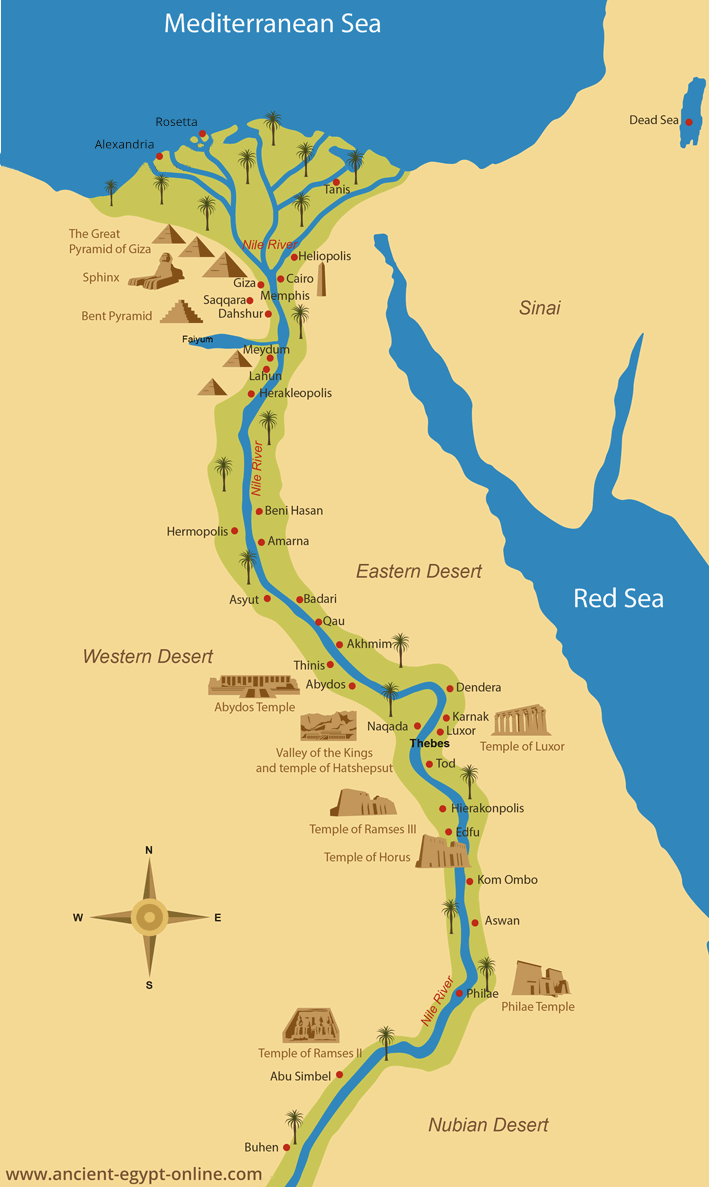
FUN FACTS
Egyptians invented a lot of the things we use today. They invented medicine, musical instruments, paper, locks, keys, cosmetics and even toothpaste.
Ancient Egyptians loved board games. After a long day’s work along the Nile River, Egyptians often relaxed by playing board games.
Egyptians saw animals as incarnations of the gods and were one of the first civilizations to keep household pets. They were particularly fond of cats.
When a loved one had passed away, they preserved the body, which was called mummification. Egyptians believed that this would make their soul live forever.
The Egyptians were busy building pyramids. So far, over 130 pyramids have been found in Egypt. Archaeologists are still looking for more.
Egyptians of both sexes wore makeup. Vanity is as old as civilization and the ancient Egyptians were no exception. It protected their skin from the hot sun but they also believed it had healing powers.
Egyptian women had a wide range of rights and freedoms. They could buy and sell property, serve on juries, make wills and enter into legal contracts. They also had the right to divorce and remarry. Egyptian couples were even known to negotiate an ancient prenuptial agreement.
Egyptian workers organized labor strikes. Even though they regarded the pharaoh as a kind of living god, Egyptian workers were not afraid to protest for better working conditions. One of the first recorded strikes in history was in the 12th century B.C. reign of the pharaoh Ramses III when they did not receive their usual payment of grain. It took the form of a sit-in. It worked and they were paid their overdue rations.
PYRAMIDS
The Egyptian pyramids are one of the greatest mysteries of the ancient world and some of the most impressive structures ever built by humans. They were built as burial places and monuments to the Pharaohs.
The Pharaoh would be buried deep inside the pyramid with all sorts of items and treasure, including food and drink, that he may need to survive in the afterlife. Many of the pyramids also had burial rooms for the Pharaoh’s family members and servants. The walls were often covered with paintings and inscriptions, depicting the daily lives of the pharaohs.

How the pyramids were built has been a mystery for many years. Although they could be constructed using modern technology, modern science cannot duplicate the pyramids by using technology that was available at the time they were built. Scientists estimate that the costs to build the Great Pyramid today would be a whopping $1.2 billion and it would not last 5,000 years.
Scientists think that large blocks of stone were cut by the workers, transported along the Nile, and then moved up the pyramids on ramps by thousands of slaves and workers. Scientists estimate it took at least 20,000 workers over 23 years to build the Great Pyramid of Giza.
When the entire pyramid had been built, it was then covered in white limestone and finished off with a cap of gold on the tip. Pharaohs would begin having their pyramid built when they first became a ruler because these gigantic structures took so long to build.
Curses, physical traps and fake burial chambers or passages were used in the pyramids to try and trick thieves and robbers from looting the tomb. Because there was such valuable treasure buried within the pyramid, grave robbers would try to break in and steal the treasure.
Despite the Egyptians’ efforts, nearly all of the pyramids were robbed of their treasures by 1000 B.C.
PYRAMID FACTS
Egypt is home to about 138 Egyptian pyramids.
The Great Pyramid of Giza points very precisely to the north.
The pyramids of Egypt are all built to the west of the Nile River. This is because the western side was associated with the land of the dead.
The most spectacular pyramids are located in Giza in northern Egypt. The largest one was built for the Pharaoh Khufu. Known as the Great Pyramid, it is 451 feet tall. For over 3800 years, until the Eiffel Tower was built, it was the tallest man-made structure and is one of the Seven Wonders of the World.
The base of a pyramid was always a perfect square!
MAKE AN ORIGAMI PYRAMID
Use the yellow origami paper you got in your supply kit, or any square paper you have at home. Then watch this video to learn how!
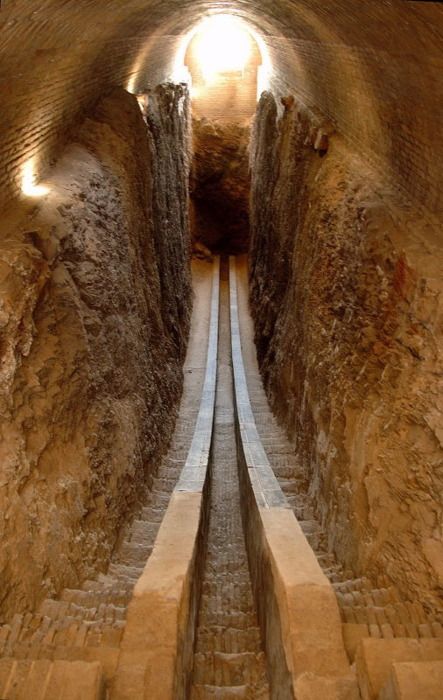
THE GREAT SPHINX
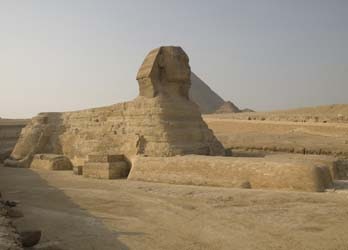
The Great Sphinx of Egypt ‘protects’ the Egyptian pyramids. With the body of a lion and the head of a Pharaoh, this structure was intended to keep the burial tombs safe from the effects of angry gods and thieving humans.
The Great Sphinx of Giza is still the world’s largest statue, measuring 240 feet long and 65 feet high.
After the Sphinx was built, over the course of the next 1000 years, it fell into deterioration. The entire body was covered in sand and only the head could be seen. Between 1925 and 1936, the entire sphinx was finally dug out and the restoration of the Sphinx continues today.
ARCHAEOLOGY
From the boy-king’s glitzy tomb to the Rosetta stone, the pyramids at Giza and written words on a papyrus, Egypt holds a vast and mysterious trove of history with interesting stories to tell. Archaeologists continue to discover these ancient sites and artifacts.
One of the ways we know about people who lived long ago is through archaeology, the study of past life through what’s been left behind. An archaeologist might find a pot, a grave or the remains of a building. Each discovery is like a piece of a puzzle. The archaeologist works to put these pieces together to create a picture of what life was like long ago.
Like all scientists, archaeologists start with a question they want to explore, such as, “Why was this city abandoned?” Then, they gather evidence by digging in the field. Back in the lab the analyze their evidence. Finally, they share their results with others.
It’s not easy finding the remains of an ancient culture. As years pass, buildings and artifacts get buried under sand, dirt or even other settlements. Archaeologists have to dig underground to find these remains.
There are many kinds of evidence that teach us about the past: majestic pyramids, the ruins of an ancient city, pieces of pottery, even a simple trash pit.
ROSETTA STONE
Dating to 196 B.C., the Rosetta Stone holds a decree written by a council of priests that confirms the right of pharaoh Ptolemy V (who was 13 years old at the time) to rule Egypt.
The stone was discovered by a scientific team that was part of a military expedition led by Napoleon in 1799. What makes the Rosetta Stone remarkable is that the decree was written in three languages: hieroglyphic, Demotic and Greek. When the stone was discovered, only the Greek language was known, but because the Greek inscription was the same decree as the other two languages, it helped scientists understand those languages.
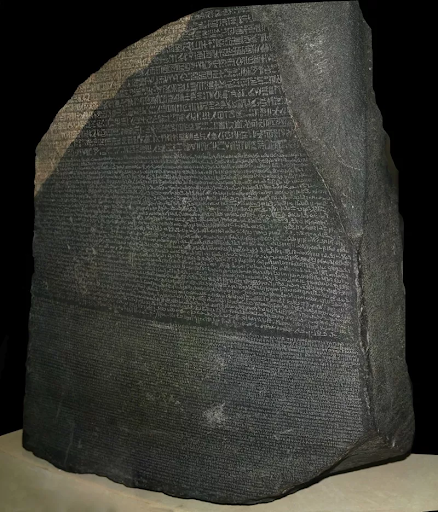
MUMMIES
In order to have a life after death, the Egyptians believed their bodies had to be preserved so they could use them in the afterlife. The Egyptians believed that when they died, they would make a journey to another world where they would lead a new life.
Egyptians paid vast amounts of money to have their bodies properly preserved. The specific technique the Egyptians used to preserve bodies was called mummification. It involved removing the internal organs, drying out the body, and wrapping it in bandages. From start to finish, it took about 70 days to embalm a body. The priest in charge would wear the mask of a jackal representing the god Anubis.
The body was washed and purified. All organs were removed except the heart. The Egyptians thought the heart was the center of intelligence and emotion. The body was filled with stuffing. Then it was dried by covering it with something called natron, which absorbed all the moisture from the body. After 40-50 days the stuffing was removed and replaced with linen or sawdust. The body was wrapped in strands of linen and covered in a sheet called a shroud. It was placed in a stone coffin called a sarcophagus.
The mummy was now ready for its journey to the afterlife. First, though, it had to pass through Duat, or the underworld. Duat was a dangerous place, filled with lakes of fire, monsters, and fire breathing serpents. To get through Duat safely, the mummy’s coffin was equipped with a set of scrolls called the Book of the Dead. The mummy’s spirit could consult these scrolls and learn the spells needed to ward off danger.
Why are they called mummies? Scientists once believed the skin of embalmed bodies turned black because they had been coated in mummiya, a kind of tar. This is where the name “mummy” comes from.

Just this month, April, 2021, nearly two dozen royal mummies were paraded down the streets of Cairo to celebrate their big move from the city’s Egyptian Museum to the new National Museum of Egyptian Civilization. In what the Ministry of Tourism and Antiquities called an “unrivaled, once in a lifetime event,” the Pharaohs’ Golden Parade featured 22 ancient royal mummies on a procession of vehicles decorated with designs from the pharaohs. They included Ramses II, one of the country’s most famous pharaohs, and Queen Hatshepsut, Egypt’s only woman pharaoh. What the video below!
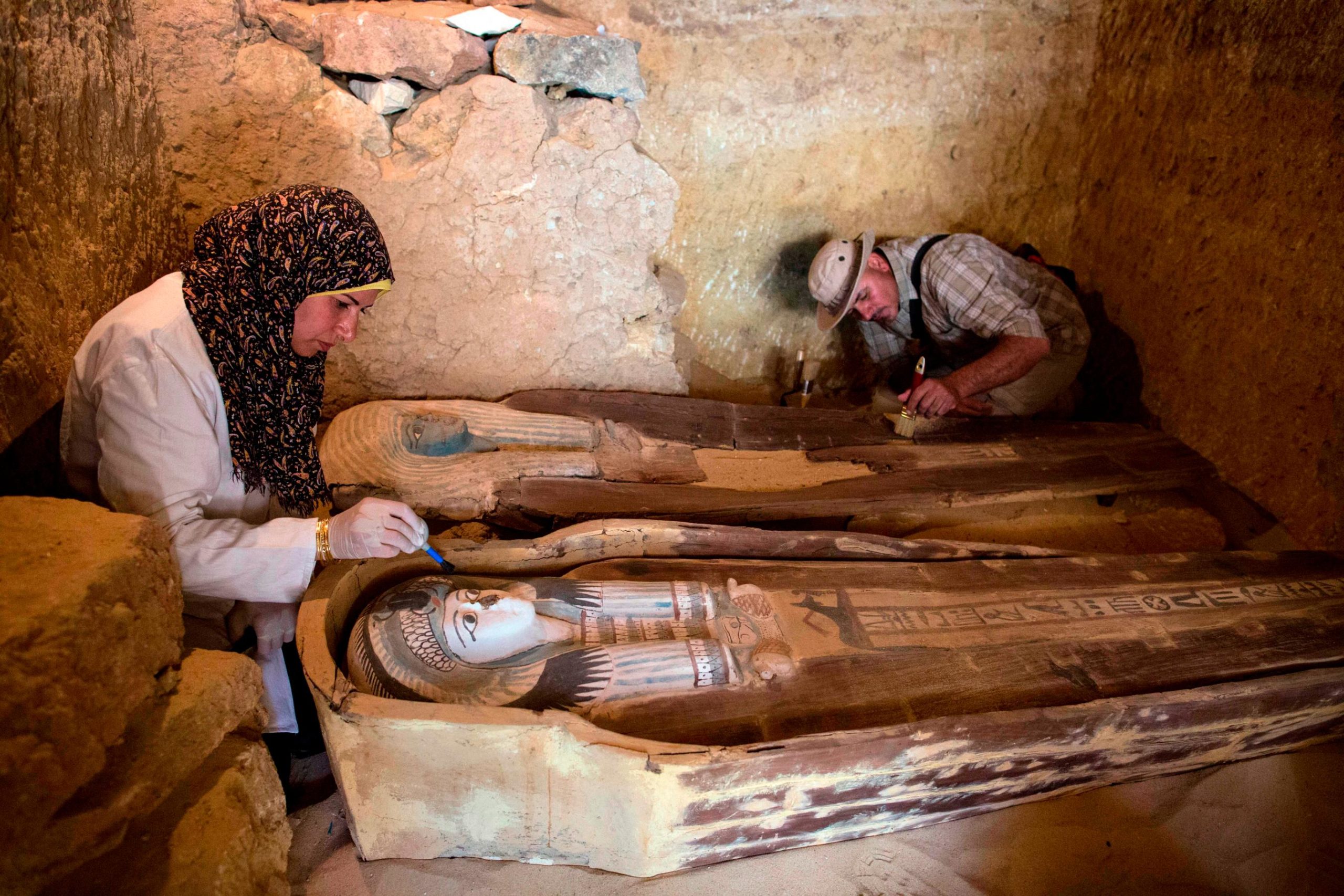
PYRAMID TOWN AT GIZA
Researchers discovered the remains of a large house with at least 21 rooms near the Giza pyramids and a nearby mound containing leopard teeth, the hind limbs of cattle, and seals with the titles of high-ranking officials. Since 1988, a team of archaeologists has been excavating the town. The people who lived there would have been involved in building the last pyramid constructed there. The discoveries made at the town include barracks for soldiers, a giant house for senior officials and a port for importing goods. They provide a vast amount of information about the people who built the pyramids.

KUFU SHIP
The Khufu ship is an intact full-size boat from ancient Egypt that was sealed into a pit at the foot of the Great Pyramid of Giza around 2500 BC. Khufu’s ship is one of the oldest, largest and best-preserved ships from antiquity. It measures 143 ft long and 19.5 ft wide. It is the world’s oldest intact ship and has been described as “a masterpiece of woodcraft” that could even sail today if put into a lake or a river.
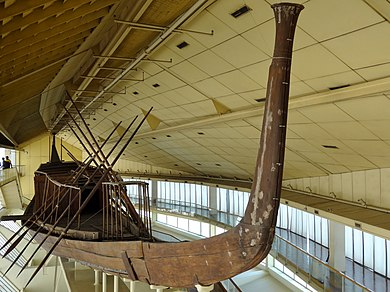
KING TUT’S TOMB
Known as the “boy king”, Tutankhamun reigned from 1333 to 1323 BC, coming to rule when he was less than ten years old. Though an unexpected early death at age 18 cut his reign short, the discovery of his remarkably intact tomb thousands of years later made him better known than most of the pharaohs who came before or after.
The entrance to King Tut’s tomb was discovered in November 1922 by the English archaeologist Howard Carter. After decades of searching and excavation in the Valley of the Kings, he discovered the steps to King Tut’s tomb buried in debris. After working for weeks, Carter and his patron, Lord Carnarvon, entered the interior chambers. The tomb was the most intact of any that had ever been found.
Over the next several years, the four-room tomb was cautiously excavated and the contents were incredible. Several thousand precious objects lay inside, including jewels, clothing, chariots, weapons, furniture and musical instruments. The most exciting discovery was found in the final room: a stone sarcophagus with three nesting coffins inside. Two of the coffins were constructed of wood covered with hammered gold. The third was made of solid gold and held the preserved mummy of King Tutankhamun.
Lord Carnarvon’s death two months after finding King Tut led to widespread rumors that those who entered the tombs were cursed, a legend that continues today. When Tutankhamun’s tomb was discovered, it sparked a media frenzy. The treasures from King Tut’s tomb traveled on a world tour from 1972 to 1979. Today most of the treasures are exhibited at the Egyptian Museum in Cairo, Egypt.

HIEROGLYPHICS
Ancient Egyptian hieroglyphics (holy writings) were one of the hardest of Egypt’s mysteries to uncover. The Rosetta Stone was the key.
Ancient Egyptians began writing their language more than 5,000 years ago. Ancient Egyptian, like modern English, could be written two ways. Hieroglyphs, in which every sign is a picture, was their equivalent of our printed writing.
The Egyptians believed there was great power in a name. If someone’s name was remembered then he or she would survive in the afterlife. That’s why pharaohs’ names were written in hieroglyphics in their tombs.
There were over 700 hieroglyphs and they were very hard to learn. Because each hieroglyph had a unique meaning, students would have to memorize each one individually. So it took many years to learn how to read and write hieroglyphics.
Those who were trained to do this were called scribes, and would start their training between the ages six and seven. Even though it was so hard to learn, many people chose to become scribes because they were treated with great respect in Ancient Egypt. But only wealthy children were given the chance to train as scribes.

WRITE YOUR NAME IN HIEROGLYPHICS
Click below for two charts you can use to write your name in hieroglyphics! Print or view online.
GODS AND GODDESSES
Religion was the center of Egyptian life. Ancient Egyptians believed in and worshipped more than 2,000 gods and goddesses. Each one was thought to have responsibility for a different part of peoples’ lives.
The Egyptian king was the absolute ruler, and owner of everything – all the land, water and people – in his or her kingdom. Egyptians called their kings “pharaoh”, meaning “great house”.
They believed the pharaoh was a God, so the Egyptians developed a theocracy, or a government ruled by religious leaders. This is why Egyptian people were so willing to give their grain to the Pharaoh and build him or her incredible temples—they thought the Pharaoh was a living God that would be with them forever in eternity.
Here are the five most worshipped gods and goddesses!
AMUN
Among all the multitude of Egyptian deities, the god Amun was considered to be the king of the gods, a supreme creator-god. He was the ancient Egyptian god of fertility and life.
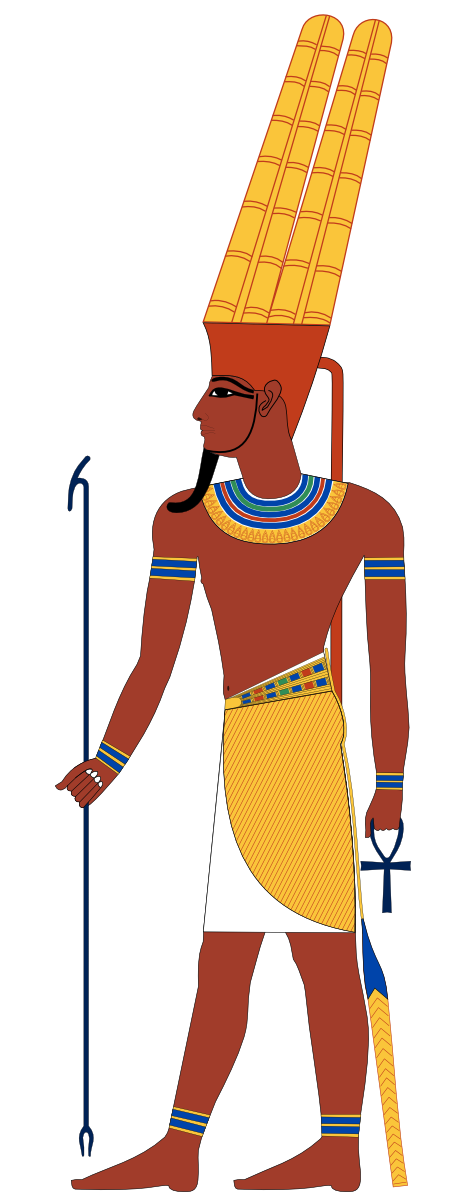
Ra
Ra (pronounced Ray) was the Sun God and the source of life, goodness, and righteousness. He was the lord over all the gods and was the special protector of kings. Every night he was swallowed by the sky goddess Nut and reborn each morning.
Amun and Ra merged into one god and became Amun-Ra between the 16th and 11th centuries B.C.

OSIRIS
Osiris was the god of the dead, the underworld, and the afterlife. Considered to be a merciful judge of people in the afterlife, Osiris is also credited with the fertile flooding of the Nile. It is said the dead kings of Egypt would rise with Osiris and inherit eternal life.
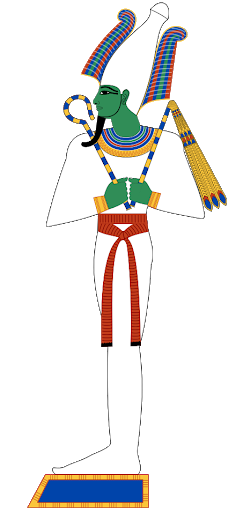
ISIS
Isis was the ancient Egyptian goddess of marriage, fertility, motherhood, magic and medicine and the wife of Osiris. Her cult subsequently spread throughout the Roman Empire, and Isis was worshipped from England to Afghanistan.
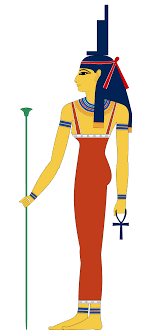
HORUS
Horus, the falcon god, was Egypt’s first national god worshiped by all of Egypt. Horus is the son of Osiris and Isis. Egyptians viewed Horus as the protector of the Pharaoh. As a god known in all of Egypt, he was an important unifying tool used to tie the people together under their leader. Great efforts were taken by rulers to show themselves as Horus in human form.

TEMPLES
The Egyptians believed that neglecting any of the deities would lead to suffering or loss, either in this world or the next. So Egyptians paid great respect to their deities, sang hymns in their honor, and tried to please them with rich gifts and sacrifices. They also built many beautiful temples for them, such as the Karnak Temple Complex near Luxor, pictured here.
The massive temple complex of Karnak is still the largest religious building ever constructed. Building on the temple continued for over 3000 years throughout the history of Ancient Egypt. It was known as Ipet-isu—or “most select of places”—by the ancient Egyptians. Just part of it, the Hypostyle hall, at 54,000 square feet and featuring 134 columns, is still the largest room of any religious building in the world. It is the Temple of Amun-Ra, considered to be where that god lived on earth with his wife and son, who also have temples at the site.
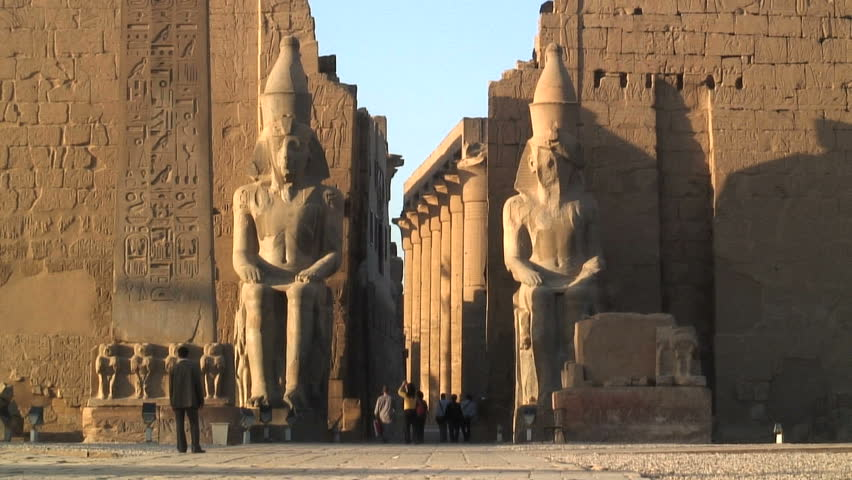
MAKE YOUR OWN GOD OR GODDESS
Click the button for fun YpsiWrites steps to help you create your own god or goddess!








